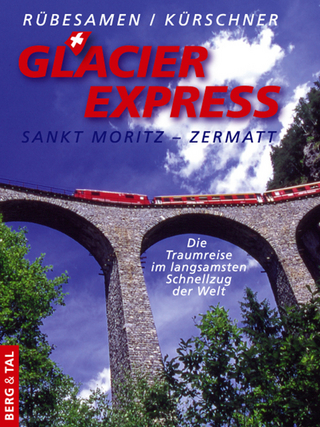
A World History of Rail
From the Steam Regime to Today
Seiten
2025
Amberley Publishing (Verlag)
978-1-3981-2551-3 (ISBN)
Amberley Publishing (Verlag)
978-1-3981-2551-3 (ISBN)
- Noch nicht erschienen (ca. Juli 2025)
- Versandkostenfrei innerhalb Deutschlands
- Auch auf Rechnung
- Verfügbarkeit in der Filiale vor Ort prüfen
- Artikel merken
New paperback edition - Is it possible to overestimate the impact of the railway in history? Jeremy Black analyses that impact from the beginning to today. And of course it's not all a triumph. The network of the Congo today operates on three gauges run by separate companies; and a lot of it doesn't work.
There were 20,000 miles of railways in 1865 and about a million by 2020. Scale has always been a key theme in railway history. In the First World War, the London and North West Railway transported 325,000 miles of barbed wire and over twelve million pairs of army boots. At the end of the twentieth century, Indian Railways sold 4.5 billion tickets annually. With his renowned ability to take the long view of any subject and bring it into sharp focus for the reader, Jeremy Black examines how rail transformed the world. While always shaped by commercial interests, the role of the railway was (and is) strategic in the broadest sense: like Roman roads and Chinese canals, it helped develop the economic links that sustained and strengthened the major powers. For example, the railway was fundamental in integrating the frontiers of settlement with the world economy, in the spread of cultivation and ranching, and in the exploitation of mining opportunities. Rail expanded the ‘logistical space’ of most states.
To give one modern example of the political importance of rail, Ukraine’s railway is on the 1.52 metre gauge, rather than the 1.435 metre one used in Poland and most of Europe. In 2022, Denys Shmyhal, Ukraine’s Prime Minister, declared that the railways there would be rebuilt to the European gauge. This enhanced capability would counter the Russian ability to blockade Ukraine’s Black Sea ports, notably Odessa. The plan was not endorsed by the Kremlin…
There were 20,000 miles of railways in 1865 and about a million by 2020. Scale has always been a key theme in railway history. In the First World War, the London and North West Railway transported 325,000 miles of barbed wire and over twelve million pairs of army boots. At the end of the twentieth century, Indian Railways sold 4.5 billion tickets annually. With his renowned ability to take the long view of any subject and bring it into sharp focus for the reader, Jeremy Black examines how rail transformed the world. While always shaped by commercial interests, the role of the railway was (and is) strategic in the broadest sense: like Roman roads and Chinese canals, it helped develop the economic links that sustained and strengthened the major powers. For example, the railway was fundamental in integrating the frontiers of settlement with the world economy, in the spread of cultivation and ranching, and in the exploitation of mining opportunities. Rail expanded the ‘logistical space’ of most states.
To give one modern example of the political importance of rail, Ukraine’s railway is on the 1.52 metre gauge, rather than the 1.435 metre one used in Poland and most of Europe. In 2022, Denys Shmyhal, Ukraine’s Prime Minister, declared that the railways there would be rebuilt to the European gauge. This enhanced capability would counter the Russian ability to blockade Ukraine’s Black Sea ports, notably Odessa. The plan was not endorsed by the Kremlin…
Jeremy Black is Emeritus Professor of History at Exeter University. He is a prolific lecturer and writer, the author of over 100 books. Many concern aspects of eighteenth-century British, European and American political, diplomatic and military history but he has also published on the history of the press, cartography, warfare, culture and on the nature and uses of history itself. He sits, or has sat, on the editorial boards of History Today, International History Review, Journal of Military History, and Media History.
| Erscheint lt. Verlag | 15.7.2025 |
|---|---|
| Zusatzinfo | 16 Plates, color |
| Verlagsort | Chalford |
| Sprache | englisch |
| Maße | 129 x 198 mm |
| Themenwelt | Natur / Technik ► Fahrzeuge / Flugzeuge / Schiffe ► Schienenfahrzeuge |
| ISBN-10 | 1-3981-2551-2 / 1398125512 |
| ISBN-13 | 978-1-3981-2551-3 / 9781398125513 |
| Zustand | Neuware |
| Haben Sie eine Frage zum Produkt? |
Mehr entdecken
aus dem Bereich
aus dem Bereich
die Rhätische Bahn schreibt Geschichte
Buch | Hardcover (2023)
Edition Somedia (Verlag)
59,00 €
St. Moritz – Zermatt : die Traumreise im langsamsten Schnellzug der …
Buch | Hardcover (2023)
Verlag Berg & Tal
14,95 €
Betriebsmaschinendienst, Einsatz bei den Bahnbetriebswerken und …
Buch | Hardcover (2024)
EK-Verlag
54,00 €


